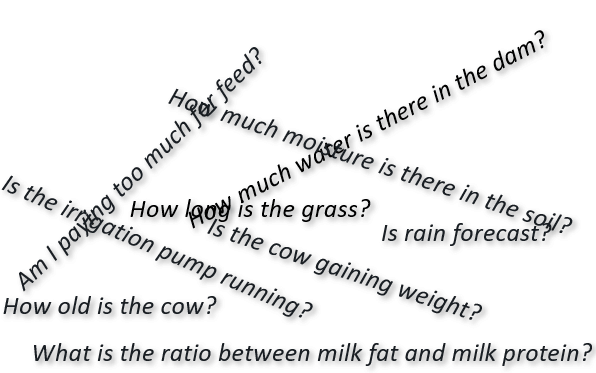by Andrew Bilsdon, Delivery Lead – Altis Sydney
I had the great pleasure of visiting a friend in Northern Tasmania whose family are running a successful dairy farm in the beautiful Devonport region where the grass is green and rain plentiful.
Being a desk-bound IT type, I was of little practical help so my attention quickly turned to the vast number of decisions that were being made in order to achieve one key outcome:
Produce milk with the optimal protein content.
Now I have taken poetic license and called this post Growing a Better Cow but you get my point!!
So why care about protein content? well, it is simple, what the dairy will pay for a litre of milk is dependent on the protein content.
Farmers making many crucial decisions is not a new thing, it’s part of the job I guess. What has changed is the level of scrutiny applied by the dairy, or abattoir, when they decide on the value of how much the ‘product’ is worth.
Problem
So we now have lots of decisions that are being made daily and it is extremely difficult to know which ones are beneficial to the product value. It can also be difficult to efficiently acquire the data on which to make the decisions
Examples include

Solution
With my simple naivety I decided that this was an ideal problem for technology, for example:
- Internet Of Things (IoT) devices that can measure
- Soil moisture
- Grass height
- Dam levels
- Irrigator operation
- Silage (e.g. type of fodder)
- Moisture
- Acidity
- etc.
- Satellite data to tell us about Normalized Difference Vegetation Index (NDVI) (i.e. how well is the grass growing).
- Open data feeds from the Bureau of Meteorology to help model irrigation strategies.
- Scanning of animals via their NLIS tag so that an individual animals feed consumption vs milk production could be correlated.
- Consumption of milk reports from the dairy that will provide a daily analysis of milk quality and measurement of the goal to:
Produce milk with the optimal protein content
How hard can this really be? Simple right? I just need to get a farmer onboard, collect data, massage the data then use AI to tell them where they are going wrong!!
Awakening
OK, here is the rub, it is not that simple! Not that there aren’t businesses or even government initiatives, already providing the technology to the farming industry, because there are. A few examples include:
- Data Farming, think of it as Business Intelligence for farmers, along with Satellite Imagery of things like NDVI.
- Victorian Government to support farmers with IOT.
- Smart farming future of agriculture who deliver AI plus other services including drone imaging.
So what is the issue if these businesses are already pursuing technology solutions? Well, I think a paper written by Ian Gibb explains it wonderfully and stopped me in my tracks. It is titled:
How do some farm managers always seem to make the right decision?
He makes many interesting points, however, from a Data, Info and Analytics perspective these are the ones that stand out:
- A data set that attempts to relate any data measurement with profit will produce a scatter that looks like someone fired a shotgun at a sheet of paper from about 20 meters. This should not be surprising given the number of variables involved.
- Statistical relationships between any data measurement and profit are usually quite weak.
- The most profitable farmers in a group are virtually never the best technically in any category but are almost always in the top few farms for almost everything.
- Farmers with quite ordinary technical measures in a number of areas can be very profitable if they don’t get anything badly wrong.
So What?
So why write this post, well because I guess it’s always refreshing to remind myself that regardless of the scenario:
- Complex systems cannot be distilled to a model where a few measurements and tweaks will deliver the desired financial outcome. Instead, consider models for subsystems. In the example above these could be Irrigation or Feed Management.
- Technology supports decision making. we need to remind ourselves of the risk in assuming it can sit in the centre of the process, leave room for the poor consumer.
- It is very easy to arrive at solutions that can ingest large volumes of data and then be tempted to expose it to the consumer triumphantly. Unless your consumer is a data geek, which the poor farmer wouldn’t have been, we run the risk of just adding noise, not information. The use of IoT is a potential culprit in this case.
